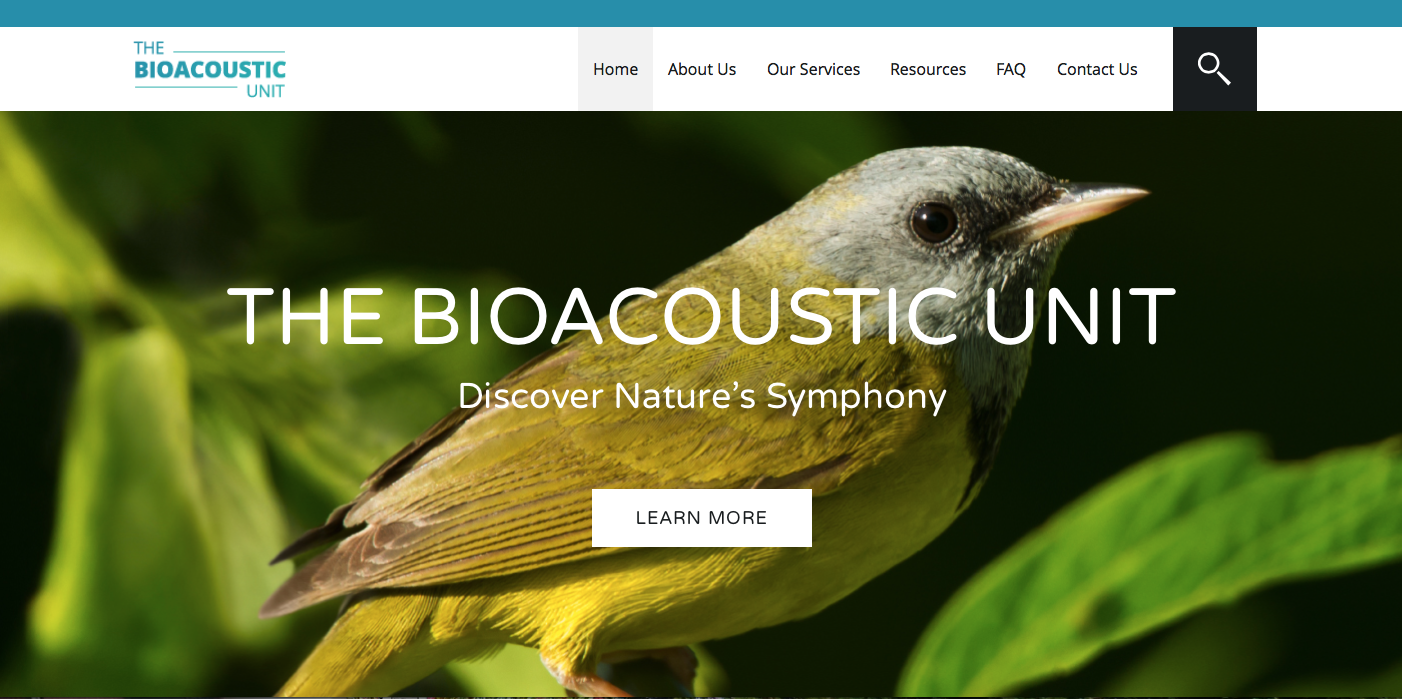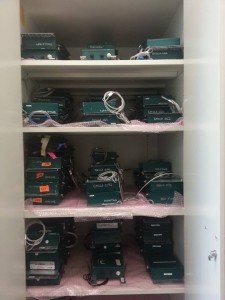The Bayne Lab at the University of Alberta and the ABMI’s Application Centre are pleased to announce a new partnership: The Bioacoustic Unit!
Many people are concerned about their environment and the wildlife in it. However, for many wildlife species we don’t have the information we need to make informed decisions about natural resources and land use. The Bioacoustic Unit is a great opportunity to bring ecological monitoring into the 21st century and provide that information. Through new technologies we’re inventing, more people will be able to access information, contribute data, and learn about wildlife populations. Putting this information all in one place and developing new ways to extract the most information possible will lead to more efficient and informative environmental monitoring.
– Dr. Erin Bayne, Co-Director, Bioacoustic Unit & Associate Professor, Biological Science, University of Alberta
The Bioacoustic Unit monitors vocalizing wildlife species such as birds and amphibians. To do this, researchers use automated recording units, or ARUs as they’re commonly known, to record the sounds made by wildlife. The data can then be used to assess whether a species is present at a site, estimate its abundance, and develop statistical models of its habitat use and distribution.
At its unique location at the University of Alberta, one of Canada’s top universities, the Bioacoustic Unit is conducting cutting-edge research to improve methods for collecting acoustic data to better understand wildlife communities. For example, Bioacoustic Unit graduate students and other researchers are studying the impacts of industrial noise on owls, and the effects of forest fire severity on bird communities; they are also developing statistical techniques to estimate bird density from acoustic data. Meet the research team here!
I am very excited to join this team of dedicated professionals. We are combining traditional field research with cutting edge technology to answer key questions about wildlife populations.
– Dr. Shawn Morrison, Manager, Bioacoustic Unit
The Bioacoustic Unit also offers a suite of services for clients undertaking wildlife studies. The Bioacoustic Unit deploys ARUs, processes and stores acoustic data, and reports on the results. The Bioacoustic Unit also supports clients wishing to do some or all of this work themselves, and has developed standardized protocols for deployment and processing.
The Bioacoustic Unit works with a wide range of clients and collaborators on their wildlife monitoring projects, whether they be monitoring organizations, researchers, industrial managers, or government bodies that monitor wildlife. The Bioacoustic Unit can help to:
- Design a monitoring project from start to finish to achieve research objectives,
- Supply standardized protocols,
- Collect audio data in the field,
- Process and analyze audio data into species identifications,
- Or all of the above!
Some users collect many terabytes of audio data but may not have the capacity or expertise to analyze it. The Bioacoustic Unit has a team of experts who
efficiently and effectively translate audio recordings into species identifications. The Bioacoustic Unit has also developed automatic recognizers for several species; these recognizers can quickly process audio files to detect a species of interest.
Because standardized and shareable audio data can be pooled across regions and study areas, Bioacoustic Unit clients are encouraged to follow standardized protocols and contribute data to the Bioacoustic Unit’s publicly available data set. However, because confidentiality issues may preclude full public access, we are also developing private data uploading capability, where clients can confidentially add their data to a larger dataset, which can vastly improve the power of statistical analysis and modelling.
Learn more about the team, services, and the wealth of resources available.
And, get in touch!


